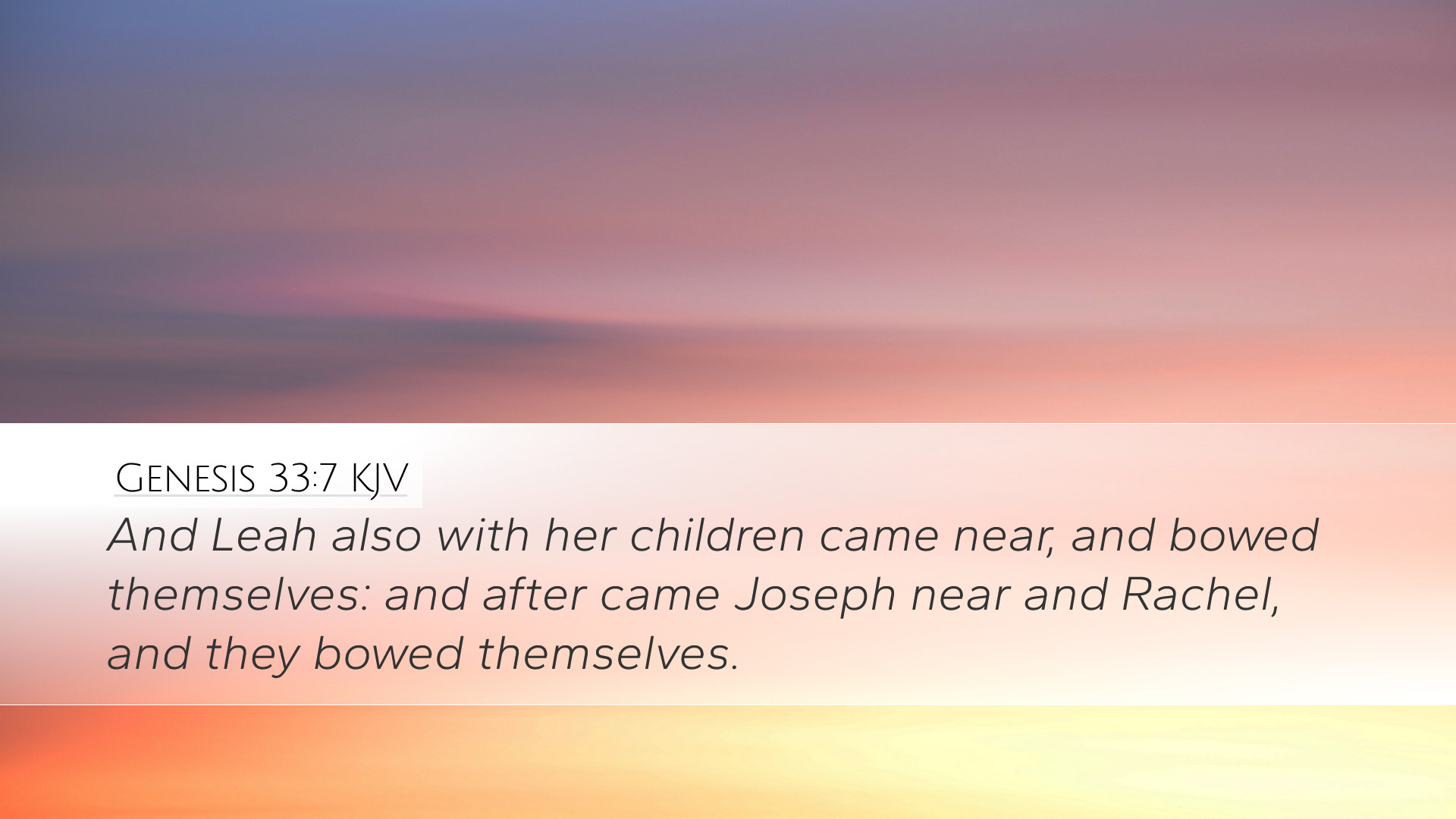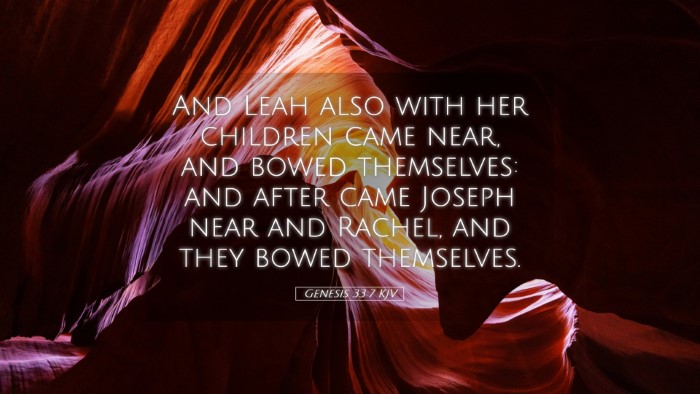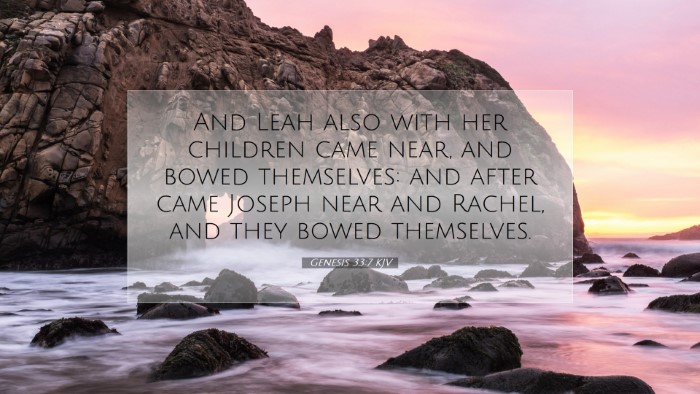Commentary on Genesis 33:7
Verse Reference: Genesis 33:7 - "And Leah also with her children came near and bowed themselves: and after came Joseph near and Rachel, and they bowed themselves."
Contextual Background
This verse falls within the narrative of Jacob's return to Canaan after years of exile. Jacob had previously spent considerable time away due to his conflict with Esau, his brother, and the overall events that transpired within his family unit. The return of Jacob is pivotal as it symbolizes reconciliation, not only with his brother Esau but also with his past. The mention of Leah and Rachel illustrates the complex familial relationships within Jacob's household.
The Significance of Bowing
The act of bowing is a significant gesture in the Biblical context, often representing humility, respect, and submission. The approach of Leah and her children to Jacob demonstrates a recognition of his role as the patriarch and leader of the family. This can also be interpreted as an act of allegiance and acknowledgment of Jacob's spiritual authority.
Insights from Public Domain Commentaries
-
Matthew Henry:
Henry notes that the submission of Leah and her children to Jacob is emblematic of the reconciliation process. He emphasizes the importance of family unity and the role of humility in overcoming past grievances. This bowing serves as both an acknowledgment of Jacob's position as a leader and a restoration of family ties that had been strained.
-
Albert Barnes:
Barnes interprets the gathering of Leah and her children as a unified front in approaching Jacob, highlighting their collective identity. He argues that this not only signifies forgiveness but also the desire for a new beginning within the family. The sequence of the bowing is significant; Leah precedes Rachel, illustrating the complex dynamics of Jacob's relationships with his wives and the need for harmony among all members.
-
Adam Clarke:
Clarke provides a detailed overview of the familial complexities. He points out that the order in which the family approaches Jacob indicates a hierarchy and perhaps reflects unresolved tensions. Clarke also discusses the emotional weight behind this moment, considering the years of separation, fear, and uncertainty. The act of bowing epitomizes both reverence and the desire for acceptance.
Family Dynamics and Unity
The family relationship is a predominant theme in this passage. Jacob's history with Leah and Rachel was fraught with jealousy and rivalry (Genesis 29-30). The act of bowing, especially in a familial context, suggests a move toward healing these wounds. The reconciliation presented here is not just about Jacob and Esau but about recognizing and mending relationships within his own family. This is a critical reminder for contemporary readers on the significance of addressing familial issues with humility and grace.
The Role of Children in the Reconciliation Process
The presence of the children during this moment signifies that reconciliation is not only for the adults involved but also has implications for future generations. By bringing their children forward, Leah and Rachel are showing that the future of their families depends on resolving past grievances and fostering an environment of unity.
Theological Reflections
One of the key theological themes in this passage is the reconciliation not just between individuals but also with God. Jacob’s journey back to Canaan can be seen as a metaphor for spiritual restoration. His family’s act of bowing illustrates their collective recognition of God’s providence and grace throughout their tumultuous history.
Lessons for Pastoral Care and Ministry
This passage serves as a rich source of reflection for pastors and church leaders. The themes of familial loyalty, humility, and the importance of reconciliation can be drawn upon for counseling families facing strife. It challenges ministers to facilitate forgiveness and reconciliation within their congregations, mirroring the reconciliation between Jacob and Esau.
Conclusion
Genesis 33:7 encapsulates profound lessons about humility, reconciliation, and the intricacies of familial relationships. Insights from various commentaries provide a deeper understanding of the text, encouraging readers to reflect on their own relationships and the grace of God that operates in reconciliation. This verse is a reminder that while past conflicts may strain relationships, there is always an opportunity for healing and unity through humility and grace.


